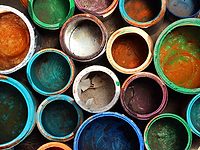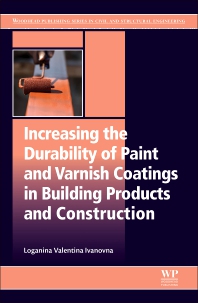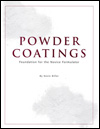Industry Leader Outlines How the Philippines Phased Out Lead Paint

QUEZON CITY, Philippines – A leader of the paint industry in the Philippines cited the collaboration by government, industry and civil society players as a crucial element in the phase-out of lead-containing paints in the country.
Johnson Ongking, Vice-President of Pacific Paint (Boysen) Philippines Inc. and former President of the Philippine Association of Paint Manufacturers (PAPM) praised the multi-stakeholder collaboration for facilitating the phase-out of lead paint.
At a recent forum held in Jakarta, Ongking described to the Indonesian audience the results of a partnership that involved the Philippines’ Department of Environment and Natural Resources (DENR), PAPM and its member paint manufacturers and raw materials suppliers, the non-profit EcoWaste Coalition and IPEN.
Balifokus and IPEN organized the forum as part of a campaign to establish effective laws and standards eliminating lead paints.
“The key to the success in the Philippine experience was the trust and cooperation between industry, civil society and the government in working towards a common goal – to eliminate lead paint and protect future generations of Filipinos,” said Ongking, who encouraged the Indonesian paint industry to take the lead in working with other stakeholders to enact legal prohibitions against lead paint by 2020.
“Having a law prohibiting lead paint is one time [when] regulation is in the industry’s interest, and it is much better for the industry to work together with regulators to prove to all stakeholders that the paint industry is a responsible one, and to prevent potential future costs for the industry and to society.”
Loss of IQ due to lead exposure in children results in an overall loss of lifetime earnings, which leads to a significant economic impact on a country. According to the report Economic Costs of Childhood Lead Exposure in Low-and Middle-Income Countries by New York University School of Medicine, Department of Pediatrics (NYU), lead exposure costs the Philippines more than $15 billion annually.
Ongking, who is also a member of the Advisory Board of the UN-backed Global Alliance to Eliminate Lead Paint (Lead Paint Alliance), emphasized that phasing out lead in paint requires full industry cooperation to keep a “level playing field.” Some paint companies are afraid that if they switch to lead-safe paints and their competitors don’t, they will lose sales to those that don’t make the switch. So, it’s important that all the paint companies make the switch together.”
He also pointed out that this traditional industry focus on lower cost might not accurately reflect consumer preferences with regard to lead paint. “It’s probably a mistaken assumption that if you gave a homeowner the choice to buy lead paint for a lower price or lead safe paint for a higher price, that they would choose the cheaper product. I don’t think there [are] too many homeowners who would spend their hard-earned money to expose their family to lead. On the other hand, I think many people would be willing to pay a premium to make sure their families were not exposed to lead poisoning. It’s an opportunity for paint companies to move not just to safer products, but higher value paint products. Switching to lead safe paints is a win for both manufacturers and customers.” He also pointed out that if companies continue to produce paint with lead, they risk harming consumer trust in the coatings industry.
In 2011, the Ecowaste Coalition, with support from PAPM, petitioned the DENR to develop a regulation on lead in paint. After a series of consultations and technical working group meetings, the DENR in 2013 issued the Chemical Control Order for Lead and Lead Compounds, which provides for the phase-out of lead-containing paints used for decorative as well as industrial applications. He informed the audience that one tool they can use to assist in this process is the Model Law that the Lead Paint Alliance has provided for countries like Indonesia to use as a template for a regulation to phase out lead paint.
Ongking explained that in order to ensure a level playing field, PAPM organized a series of technical workshops to inform paint formulators of safe and cost-effective alternatives to lead-based raw materials. This is a key part of capacity building that he hopes the Indonesian paint industry association will provide its members.
One of the biggest problems regarding lead paint is that in countries where lead paints are not banned, there is no way for consumers to know whether the paint they buy contains lead. One way for paint companies to inform consumers that their paint brands are free of lead is to obtain third-party Lead Safe Paint® certification that ensures the lead content of their products does not exceed the total lead content limit of 90 parts per million, the legal limit set by the Philippines as well as the United States, Canada, India, Nepal, Cameroon, Ethiopia and Kenya.
Just as the presence of lead paint can do damage to a paint brand, Ongking pointed out that Lead Safe Paint certification can provide a halo effect that can provide consumer trust not just for the reformulated paint products that formerly contained lead, but for the whole certified brand.
He also encouraged the Indonesian paint association and individual paint companies to become part of the Lead Paint Alliance, signifying their commitment to eliminate lead paint.
Ongking noted the role of civil society groups such as the Ecowaste Coalition and IPEN was “incredibly valuable.” Among other things, the NGOs contributed to raising awareness of the dangers of lead paint by conducting lead paint studies, by organizing public information activities, by promoting compliance to lead paint regulation and monitoring breaches, by promoting independent third-party Lead Safe Paint certification in collaboration with PAPM, and by pushing for supplemental directives urging mandatory use of lead-safe paints.
Looking for a reprint of this article?
From high-res PDFs to custom plaques, order your copy today!








